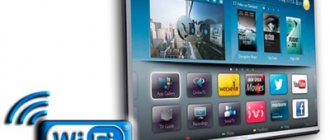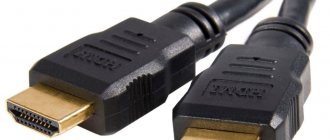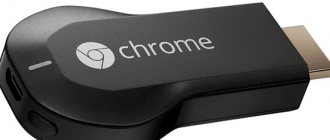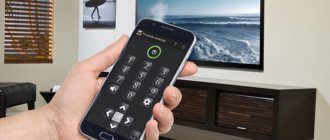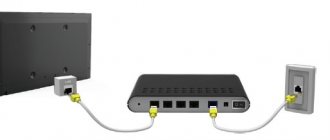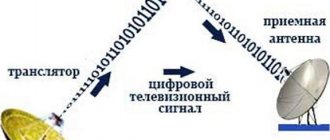The VCR is a real rarity. Almost no one uses this technology. Therefore, modern models from LG, Samsung, Philips and other manufacturers are not equipped with special interfaces for connecting a VCR to a TV.
Fans of vintage equipment continue to use it with great pleasure. Therefore, the issue of synchronizing VCRs with modern TVs is still relevant. It is quite possible to do this. The main thing is to choose the right connection type.
Now we will determine how to connect a Philips VCR or any other brand to popular TV models. There is nothing complicated about it. Every user can cope with the task. No special skills or equipment are required.
Content:
- 1 Why use a VCR
- 2 Common methods of connecting equipment 2.1 Classic RCA connection
- 2.2 Connection via SCART
- 2.3 Application of coaxial cable
- 2.4 How not to knock down the antenna when connecting a VCR
A VCR is a rarity of modern technology that can be used to play cassettes containing films, TV series, and family celebrations. Often it is for the sake of the latter that they take out the radio from the closet and connect it to a regular or modern TV. Let's figure out which TVs are easy to connect vintage equipment to. What to do with modern TVs from LG, Philips, Samsung, where there are no special connectors. And how to generally connect a VCR to a TV.
Peculiarities
Everyone has heard the phrase that progress does not stand still. Usually the expression is relevant for digital equipment that has replaced things that were popular several decades ago. Who now remembers cassette players, pagers, and other achievements of science and technology?
Nowadays such rare equipment is practically not used, taking into account the fact that the devices do not even have the appropriate connection connectors. Some users, out of nostalgia or technical curiosity, try to synchronize the VCR with the TV. At the same time, the question of how gadgets interact with each other is relevant.
Why use a VCR
The appearance of the first videotapes created a real sensation in the world of cinema. Foreign cinema and recordings of classic and already legendary films have become available for viewing. Users also learned how to record their favorite TV shows onto cassettes.
Video cameras were also cassette cameras. They filmed all significant events: birthdays, anniversaries, awards, weddings, graduations. Moreover, the quality of the recording was at a good level at that time. As a result, many people have 1-2 video cassettes with very valuable recordings in their closets. And what to do with them:
- You can digitize the recording and convert it to DVD format. Finding salons that still do this is quite difficult, but it is possible. In this case, the maximum quality according to the new standards will be 720x576px.
- Get out a working VCR and just enjoy watching a movie.
For the second option, you will need to understand how to connect the VCR to the TV.
Historical reference
The first real results of video transmission were achieved thanks to the American scientists Ginzburg and Anderosn. They used magnetic recording using the longitudinal method, or by pulling the tape relative to a stationary head.
This method turned out to be ineffective due to the expansion of video recording compared to audio signals. It was necessary to increase the recording density. Cross-line fixation of files involves the placement of several heads at the same azimuth as the movement of the tape. When the tape and head moved synchronously, transverse recording lines were realized. In this case, the average speed is higher than the pulling of the tape itself. This solution made it possible to increase recording density while simultaneously reducing tape speed and consumption.
Common methods of connecting equipment
Detailed instructions on how to connect a video recorder to a TV can be found in the operating instructions for the equipment. But since the technology is quite old, many users may lose this document.
The connection is made sequentially, as in any technology, but there are no modern options such as USB, HDMI. Only the following connectors are presented:
- For coaxial cable;
- RCA connector;
- Input for SCART wire.
We will analyze in detail each option for connecting equipment. And we’ll look at options for what to do with connecting a VCR to a modern connection.
Classic RCA connection
RCA cable or tulips are a classic option for connecting vintage equipment. In modern equipment, such connectors are also available, but are rarely used. New “flat” TVs often do not have inputs for tulips. Therefore, you will have to choose a different connection method or buy an adapter.
You can connect the video recorder to the TV via tulips (RCA) like this:
- The yellow connector is inserted at one end into the Video OUT port on the VCR itself, and at the other end into Video 1 or 2 on the TV panel. Typically the connectors are the same color as the plugs to make wiring easier.
- The white and red connectors need to be placed in the audio inputs - these are cables for audio signals.
- Connect the radio to the network and use the Play button. Turn on TV.
- Find the broadcast source in the TV menu - AV and switch to it.
- If the connection is correct, the video menu will be displayed.
In some TV versions there may be not three inputs, but as many as 9. This is done for the layout of color channels. In this option, you need to focus on the colors of the tulip and the designations on the OUT-IN panel of the TV.
Tulips are the easiest way to connect a VCR to an old TV. But in terms of image quality, this option is the weakest. An RCA cable may reduce video and audio quality.
Connection via SCART
A more modern way to connect video equipment and TV. This is an alternative to RCA ports. Moreover, via SCART you can achieve video and audio transmission without loss of quality. But new TVs may not have such a port, then an adapter will be required.
There are no difficulties with this connection: one end of the wire is inserted into the corresponding sized connector on vintage equipment, the other - on the TV. Then both devices turn on. And the AV signal source is located in the TV menu.
Application of coaxial cable
Coaxial or antenna cable fits most modern TVs. To connect the video recorder through it, just follow the simple instructions:
- Insert the cable into the video equipment connector marked RF/COAX Out.
- Connect the other end of the wire to the TV in the RF/COAX In connector.
- Turn on the equipment. On the VCR, press the Play key.
- Using the TV remote control, start searching for channels. When the video frequency is detected, save it under a specific channel number. Through it you can turn on the tape recorder again without a new connection.
- Watch the selected videotape.
The only difference from previous methods is that you need to find a channel that shows video from a tape recorder connected via an antenna wire. At the same time, other TV programs, if they are broadcast via a digital signal via an HDMI cable, will not be interrupted. But you will have to switch from HDMI to TV or another signal source where the VCR will be picked up.
You need to start searching for channels on your TV, not on your digital set-top box. If you have this additional equipment connected, remove the remote control from it during setup so as not to get confused in the settings.
How not to knock down the antenna when connecting a VCR
Broadcasting digital television is also possible via coaxial cable in an apartment or private house. They come from a satellite dish or a common wire in the entrance of a high-rise building. And so that you don’t have to pull out the antenna and insert the cable from the VCR, you can do the following:
- Buy or install an attachment that will act as an adapter.
- Purchase two sets of RCA cables and one coaxial cable.
- Connect the Cable Out ports on the set-top box to the RF In on the video equipment using a coaxial cable.
- Connect one tulip to the ports on the set-top box Audio Out and Video Out and to the inputs on the video recorder Video In, Audio In.
- Include the second set of tulips in the VCR and TV (Video In or 1).
- Turn on the equipment and check its functionality.
Such a parallel connection will allow you to quickly switch between the video camera and the antenna signal, but will significantly reduce the quality of the broadcast. A modern solution is to connect digital television and additional equipment separately, using different wires.
Possible problems
Janis
I have been repairing mobile equipment and reinstalling software since 2013. I am a fan of any Android devices. I constantly monitor all the latest news regarding mobile technology.
Ask a Question
Question to the expert
There is noise during video playback. How to fix?
In this case, it is recommended to double-check the quality of the wire connections. Some cords may not be inserted tightly into the connectors.
The TV stopped receiving a signal from the VCR. What could be the problem?
There are two options to solve the problem. First, you need to make sure that the correct receiving signal is selected in your TV device. You also need to check the integrity of the socket, wire and adapter. Secondly, you need to check the integrity of the VCR. It is possible that some elements of the device have failed, which affects the successful transmission of data.
When I turn on a cassette in VCR, a second sound source appears on the TV. What to do?
An additional audio stream can be superimposed from a third-party signal source even if the best quality picture is displayed on the TV screen. This is due to a malfunction of the television antenna. To fix the problem, it is recommended to turn the device element in the other direction. As a rule, the signal from the VCR comes at low frequencies, as a result of which it is interrupted by the broadcast of TV channels from the antenna. There is no image after connecting devices. What to do? First you need to make sure that all the wires are connected to the appropriate connectors. I recommend paying attention to the color of the plugs (if an RCA cable is used). Next, you need to go to the TV settings and double-check the selected signal source. If the standard “TV” is installed, you will need to select “AV”, “VIDEO IN” or “Input”. You also need to check the wires for integrity.
| Question | Answer |
| There is noise during video playback. How to fix? | In this case, it is recommended to double-check the quality of the wire connections. Some cords may not be inserted tightly into the connectors. |
| The TV stopped receiving a signal from the VCR. What could be the problem? | There are two options to solve the problem. First, you need to make sure that the correct receiving signal is selected in your TV device. You also need to check the integrity of the socket, wire and adapter. Secondly, you need to check the integrity of the VCR. It is possible that some elements of the device have failed, which affects the successful transmission of data. |
| When I turn on a cassette in VCR, a second sound source appears on the TV. What to do? | An additional audio stream can be superimposed from a third-party signal source even if the best quality picture is displayed on the TV screen. This is due to a malfunction of the television antenna. To fix the problem, it is recommended to turn the device element in the other direction. As a rule, the signal from the VCR comes at low frequencies, as a result of which it is interrupted by the broadcast of TV channels from the antenna. |
| There is no image after connecting devices. What to do? | First you need to make sure that all the wires are connected to the appropriate connectors. I recommend paying attention to the color of the plugs (if an RCA cable is used). Next, you need to go to the TV settings and double-check the selected signal source. If the standard “TV” is installed, you will need to select “AV”, “VIDEO IN” or “Input”. You also need to check the wires for integrity. |
4.1 / 5 ( 19 votes)
Author
Janis
I have been repairing mobile equipment and reinstalling software since 2013. I am a fan of any Android devices. I constantly monitor all the latest news regarding mobile technology.
Possible faults
Connecting a VCR to an LG, Samsung, or Philips TV directly or through adapters is quite simple. The main thing is not to get confused in the inputs and outputs. But after connecting the equipment, various technical problems may arise, which can be resolved quickly enough:
- No signal due to broken cable or connector. Before connecting equipment, carefully inspect the wires for broken braiding, bends or clamps. Check the condition of the connectors. You can clean them with a soft brush. If the problem persists, try another connection option.
- No required entry. Inspect the ports on the video and TV. If the latter does not have a single suitable option, you will have to buy an adapter. To purchase the desired option, you should write down the names of the ports from the video recorder and TV.
- The TV does not recognize signals. The reason may be a cable, connector or broken socket. The test takes place using a different connection method. If the problem persists, it is necessary to replace the connectors on the equipment or send it for repair.
- Overlaying sound from a TV channel with cues from films from videotapes. The reason is the overlap of the antenna signal with the audio. You can solve the situation by moving the antenna cable from side to side to shift its position. Then the lower frequencies from the VCR will not be interrupted by TV channels.
These are the most common faults. It's also worth considering that VCRs are old technology and may not work on their own. They encounter problems such as cassette jamming, failure to rewind, and many other defects. In such a situation, you need to take the video camera for repair or digitize the tapes into a new format onto DVD discs.
Found a mistake? Select it and press ctrl+enter
- 60
Instructions
Since connecting a VCR to a computer using a video capture card or a special external device is extremely simple, let’s look at how to connect via a video card and a TV tuner.
Note! The tuner in this case will not be used to watch TV channels, but as an intermediary between the tape recorder and the computer. As for the video card, whether it is suitable or not for direct connection is described above.
- Purchase. A TV tuner can cost about $50. There are cheaper ones, but they usually produce poor video quality. The tuner must have a tulip-type tape recorder input.
Connecting the TV tuner to the computer - If your video card has an S-video jack, buy an adapter at any kiosk. Once everything is ready, connect the wire (video signal only) from the tape recorder to the video card or tuner.
- The wire from the audio signal must be connected to the audio card. To do this, you must first purchase an RCA-minijack adapter. Some video cards have the ability to connect both video and audio signals, then you don’t have to use a sound card.
Connecting the wires to the computer - Next you need to install the software. You can use the simple and familiar KMPlayer. There are also special programs for recording a stream from a VCR, for example, EyeTV or Pinacle. The KMPlayer program
- You will also need a video editor, which can also be downloaded from the Internet. A fairly simple program for these purposes is VirtualDub. Since the image quality will most likely deteriorate when transferred from a video cassette to a computer, it will have to be corrected in such programs in any case. Video editor VirtualDub
As you can see, there is nothing complicated in connecting a VCR to a computer; even a person without technical knowledge and training can do it.
About the manufacturers
The MATSUSHITA company, whose VHS/Hi-Fi video recorders are widespread in the post-Soviet space, made products using MACLORD chips. This was evidenced by the corresponding logos. Own processors were also supplied to other manufacturers, including Hitachi, JVC, Mitsubishi. Some of these companies developed separate audio channels that had better performance than their competitors.
Among the popular models in Russia, Panasonic is worth noting. The video films used a multifunctional BIS sound system. The package included several modules, unique microcircuits, fixed working heads, and various input and output switches.
